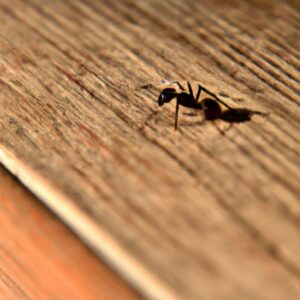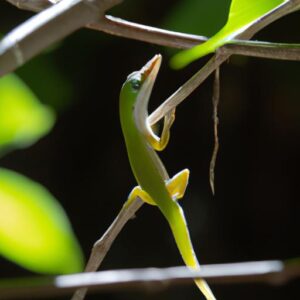Introduction
Peacock orchids, with their delicate petals and enchanting fragrance, have captivated the hearts of garden enthusiasts worldwide. These stunning flowers, also known as Acidanthera or Gladiolus callianthus, are not just a feast for the eyes but also hold a mystery that intrigues many – do peacock orchids multiply? As we delve into the world of these floral wonders, let’s unravel the unique characteristics that make peacock orchids a treasure in any garden.
Have you ever gazed upon a peacock orchid in full bloom and wondered about its ability to multiply and spread its beauty further? Join me on this journey as we explore the captivating allure of peacock orchids and uncover the secrets behind their propagation.
Understanding Peacock Orchids
Description of Peacock Orchids
Peacock orchids, scientifically known as Acidanthera or Gladiolus callianthus, are stunning flowering plants that belong to the gladiolus family. These exquisite flowers are characterized by their pristine white petals with a striking purple or maroon throat, resembling the mesmerizing patterns of a peacock’s feathers. The elegant blooms of peacock orchids not only add a touch of elegance to any garden but also emit a delightful fragrance that attracts pollinators.
Growth Cycle and Conditions for Thriving
Peacock orchids typically bloom in late summer to early fall, showcasing their beauty during the warmer months. To thrive and flourish, these flowers require well-drained soil with adequate sunlight exposure. Planting peacock orchids in a location with partial shade can help protect the delicate blooms from the scorching sun. Additionally, regular watering and proper fertilization can support the growth and development of peacock orchids, ensuring they reach their full potential in your garden.
Reproduction of Peacock Orchids
How Peacock Orchids Reproduce
Peacock orchids reproduce through a process known as corm division. Corms are underground storage organs similar to bulbs, where the plant stores nutrients for growth and reproduction. When a peacock orchid reaches maturity, it develops new corms around the original corm, allowing for the plant to multiply. These new corms can be separated from the parent plant and replanted to propagate more peacock orchids.
Factors Influencing the Multiplication of Peacock Orchids
Several factors play a crucial role in the multiplication of peacock orchids. Adequate sunlight, well-draining soil, and proper watering are essential for the healthy growth and reproduction of these plants. Additionally, the temperature and humidity levels in the environment can impact the multiplication process. By providing optimal growing conditions and care, you can encourage peacock orchids to multiply and thrive in your garden.
Methods of Multiplying Peacock Orchids
Propagation Techniques
When it comes to multiplying peacock orchids, there are several methods you can employ to spread their beauty in your garden. One common technique is through division, where you carefully separate the bulbs and replant them in suitable soil. This method allows the orchids to establish themselves in new locations and thrive with proper care and attention.
Tips for Successful Multiplication
To ensure successful multiplication of peacock orchids, it is essential to provide them with the right conditions for growth. Adequate sunlight, well-drained soil, and regular watering are key factors that contribute to the healthy propagation of these exquisite flowers. Additionally, monitoring for pests and diseases, and addressing any issues promptly, can help maintain the vitality of your peacock orchids as they multiply and thrive in your garden.
Common Issues with Multiplying Peacock Orchids
Potential Challenges in Multiplying Peacock Orchids
When it comes to multiplying peacock orchids, gardeners may encounter a few challenges along the way. One common issue is inadequate soil drainage, which can lead to root rot and hinder the growth of new bulbs. Additionally, overcrowding of bulbs in a single planting area can also impede the multiplication process, as it restricts the space for new growth.
Solutions to Common Problems That May Arise During the Multiplication Process
To address these challenges, ensuring proper soil drainage is crucial. Use well-draining soil mixes and avoid overwatering to prevent waterlogged conditions that can harm the bulbs. Furthermore, spacing out the bulbs during planting allows room for new shoots to emerge and thrive. Regular monitoring of the planting area and prompt action in addressing any issues that arise can help maintain a healthy environment for peacock orchids to multiply successfully.
Conclusion
In conclusion, the question of whether peacock orchids multiply is not just a matter of curiosity but a gateway to a deeper understanding of these exquisite flowers. Through our exploration of their unique characteristics and propagation methods, we have uncovered the secrets behind the multiplication of peacock orchids. By mastering the art of cultivating and caring for these floral gems, you can create a garden filled with the enchanting beauty of peacock orchids.
So, next time you admire the graceful blooms of peacock orchids swaying in the breeze, remember the journey they undertake to multiply and thrive. With the right knowledge and techniques at your disposal, you can nurture these flowers to multiply and spread their splendor far and wide. Embrace the mystery and magic of peacock orchids as you embark on your own gardening adventure filled with beauty, elegance, and the joy of watching these floral wonders flourish.




